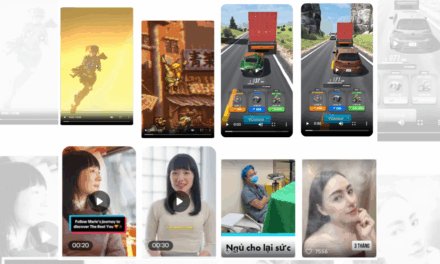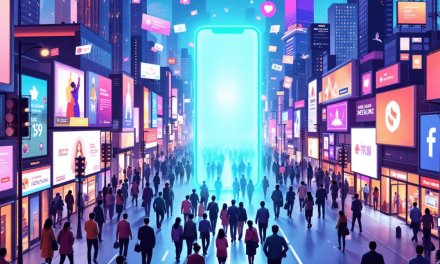Businesses need to reach their audiences wherever they are, and gaming is the biggest phenomenon and the world’s most favourite leisure activity in a lockdown, says Adrian Watkins, Growth & Marketing Director, APAC, AdColony, in this interview with MartechAsia.
The pandemic has accelerated the adoption of disruptive digital technologies and business models. As a result, Digital out-of-home (DOOH) as a channel suffered a number of consequences, with many companies trying to reshape their marketing strategies and appeal to customers who were at home in a lockdown. At the same time, DOOH campaigns began to evolve too, seeing their extensive use within games and in the metaverse, resulting in the rise of Virtual DOOH (VDOOH). In this exclusive interview with MartechAsia, Adrian Watkins, Growth & Marketing Director, APAC, AdColony, explains the phenomenal rise of VDOOH and its implications for the Asian marketers.
How is VDOOH emerging as a form of advertising? How does it work?

Virtual Digital out-of-home (VDOOH) advertisements take the shape of billboards and banners that are carefully positioned within the gaming environment, imitating out-of-home advertisements in the real world. With 2.7 billion mobile gamers globally and 1.2 billion in Asia-Pacific alone, it is fair to say that VDOOH is a creative way for brands to engage more with their audience within the gaming landscape.
It usually refers to seamless ad placements within mobile games that appear while the game is being played. Static and dynamic banners, video, custom in-game integrations, and now even audio advertisements are among the formats available for VDOOH.
The advertisements that work the best and offer the greatest experience are those that are integrated directly into the game and become a part of the user experience. These integrated ad experiences have the potential to increase engagement and retention rates.
What has been the impact of Covid-19 on DOOH services? How are the businesses and service providers dealing with it?
The pandemic has accelerated the adoption of disruptive digital technology and business models. As a result, Digital out-of-home (DOOH) as a channel suffered a number of consequences, with many companies trying to reshape their marketing strategies and appeal to customers who were at home in a lockdown.
However overall, COVID-19 appears to have been more of an opportunity depending on the way brands and companies react to it. It also provided numerous possibilities for advertisers to improve upon their conventional tactics and construct their plans for a continually changing market.
During the pandemic, DOOH campaigns began to evolve – firms that were previously prominent in the physical arena began to develop or strengthen their online presence. One of the most significant developments of DOOH displays we’ve seen thus far is their extensive use within games and in the metaverse, resulting in the rise of Virtual DOOH (VDOOH)
What is the level of adoption of this technology in the APAC region? Any success stories to share?
Through our exclusive partnership with Anzu across Asia Pacific, we were able to create a success story for 7-Eleven in Australia where they wanted to promote the attractive $1 Slurpee.
7-Eleven wanted to promote their $1 Slurpee across Australia in the middle of a pandemic, while most people were in lockdown and spending much of their leisure time: gaming.
To achieve this, they chose in-game ads through VDOOH as the medium of choice to connect with their target audience. The ads were featured on virtual billboards within popular games such as Gravity Rider Zero.
These complementary and subtle ads translated to significant real world results for 7-Eleven: the campaign achieved 95% ad viewability, 72,943 unique users, and 174% footfall increase in participating stores.
Is VDOOH suitable for all kinds of businesses? What should advertisers and marketers keep in mind when choosing this platform?
There are more than half of the world’s gamers in APAC, ranging from young, old, female, male, all with a mix of professions, which means if a brand isn’t marketing within gaming, they are not talking to all of their potential customers.
Businesses need to reach their audiences wherever they are, and gaming is the biggest phenomenon and the world’s most favourite leisure activity in a lockdown. There is no limitation on the type of business that can include gaming marketing, of which VDOOH is an important part, in their marketing strategies.
The mobile gaming audience is highly broad and varies depending on the types of games being played, as well as their motivation to stay entertained. From moms hanging out with their friends and playing team games like Among Us, to, to high net worth individuals on their commute, gamers have the biggest share in online audiences in APAC, around 36% respectively.
For instance, Fintech company Klarna utilized in-game advertising to boost awareness and drive consideration among a diverse range of shoppers in Australia. The campaign was launched across Australia’s most popular mobile games, using Anzu’s non-intrusive in-game formats and achieved 357,643 impressions; 64,840 unique gamers reached; 95% viewability rate (64% above the industry average); and 90% VCR (34% above the industry average).
Ultimately, it’s no longer a case of whether a brand’s audience plays games. It’s a question of which games are right for the target audience.
How do you see the future of VDOOH evolving in the region?
For years, the Asia Pacific region has been the leading contender in an industry expected to be valued more than 178 billion US dollars by 2021 according to Statista. With over half of the world’s video gamers residing in Asia Pacific, the region is accountable for almost three billion of them. Along with the ever-rising usage of smartphone users in Asia Pacific, the Asia Pacific region’s mobile gaming market value has skyrocketed in recent years, posing major changes in the gaming scene.
Anzu is exclusively represented by AdColony in APAC to help brands and their agencies to fully embrace the massive phenomenon of gaming marketing. Brands and companies who want to explore innovative opportunities to engage with new and existing customers can include Anzu’s VDOOH offering as part of a campaign strategy which transcends one core channel. With innovations and a greater appetite for ads in games, offered through companies like Anzu, there is no doubt that this will continue to be embraced by brands and agencies across the region.

















